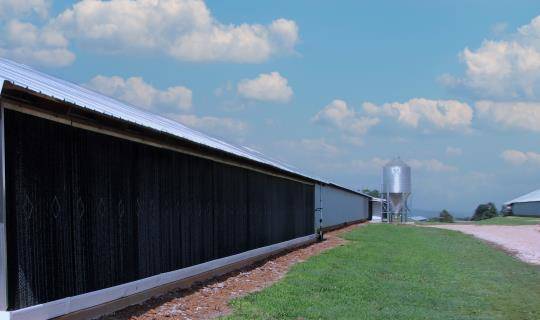Aspergillus is on the rise
By K. Scott McKenzie, PhD

Aspergillus fumigatus (“Asper”) remains an important respiratory pathogen to guard against in poultry production facilities. However, 2023 will continue to require diligence in understating the impact of Asper on commercial operations and what steps are needed to break the Asper cycle.
This mold species forms spores that, when aerosolized, spread throughout poultry hatcheries and houses into the lungs of turkeys and chickens, hatched chicks and poults, and onto eggs throughout the hatch cycle. Understanding the impact of A. fumigatus can be accomplished through hatchery egg breakouts, field diagnosis of respiratory disease coupled with cultured pulmonary necropsy tissue, and observation of mold on litter and woody/ paper material.
Prior to late 2010, there were two EPA-registered disinfectants that were very focused on controlling Aspergillus fumigatus: Biosentry 904™ and Clinafarm® EC (or SG). Several years ago, federal environmental regulators targeted the elimination of trybutylin tin oxide (TBTO), a metal “tin”-containing chemical, from commercial disinfectant products due to potential impact on and persistence within the environment. From anti-fouling paints and coatings to marine transportation surfaces, TBTO was essentially removed from all US disinfectant formulations (including Biosentry’s “Evap 100” for evaporative cooling pad and swamp cooler disinfection). The TBTO in that formulation was specifically added as an effective fungicidal co-ingredient and, thus, with the loss of TBTO the remaining quaternary ammonium by itself was no longer a desirable Asper management tool.
Fast forward to 2022 when the second fungicidal tool was removed from the poultry management toolbox in the United States: imazalil. Marketed under the brand name Clinafarm, it was a very specific fungicidal chemical sold as two formats: The EC was a liquid emulsifiable concentrate (left image) and the SG was a smoke generator (right image) commonly used in transport and hatchery applications. Due to a somewhat similar environmental regulatory burden, the business decision was made to no longer manufacture and market imazalil as a poultry fungicide into the US.
Therefore, management of Aspergillus fumigatus moving ahead will focus on two strategies: 1) Find and replace these two lost chemistries with greener formulations that can still be sporicidal to Asper, and 2) manage the avian environment to minimize growth and harboring of mold. While Arxada and Envirotech will focus on the first formulation innovation strategy, poultry producers and managers can help keep Asper at bay with a focus on these practices:
- Remove unnecessary water. Repair or replace leaky nipples; do not let standing water pool at hatcheries; squeegee standing water; repair leaky roofs and above-head pipes; exhaust all steam from hatchery tray and box washers (eliminate “sauna effect”).
- Clean mold growth harbors. Clean and disinfect exhaust plenums from hatchery separator rooms, eliminate hatchery swamp coolers, ensure no wood or paper are in pooled water.
- Watch air filtration. Be diligent with changing air filters in HVAC units; watch for mold on cellulosic evaporative cooling pads; clean and descale barn evaporative pads; don’t compost mold.
- Re-think disinfectants for Asper. Explore sporicidal chemistries; look for oxidation chemistry but consider dilution rate required to kill spores, not vegetative hyphae.







